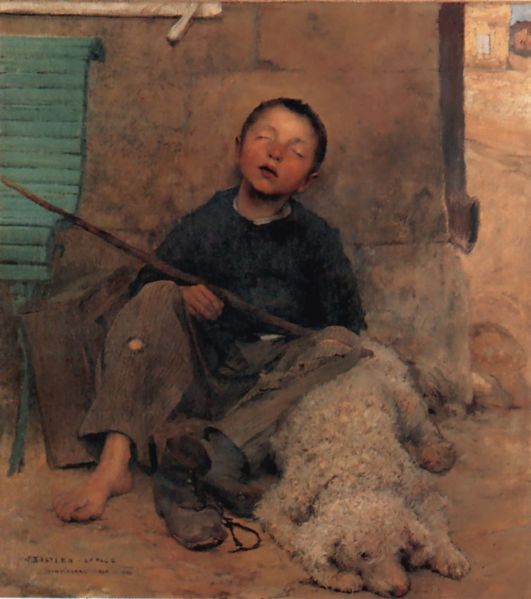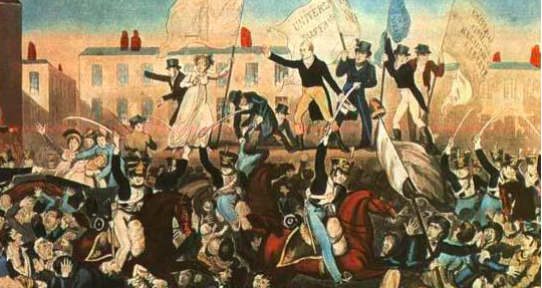Dr. G. Kim Blank

Position
Contact
Credentials
MA (Wales), PhD (Southampton)
Area of expertise
English Romantic poetry; cultural studies; theories of influence; university writing
Released January 2025: T. S. Eliot’s Animula: Contexts, Contents, & Description. This site provides all you need to know about Eliot’s relatively unknown Christmas-card poem.
Released October 2023: a large site that examines what the 1910-1911 Encyclopædia Britannica has to say about the Romantic-era poets. Over thirty of today's leading scholars were enlisted to offer commentary: Then & Now: Romantic-Era Poets in the Encyclopædia Britannica, Eleventh Edition, 1910-1911. The local paper carried a story about the project, and a 2024 essay in The Fortnightly Review adds context for the site via T. S. Eliot’s obscure poem, Animula.
Recent research interest has been on John Keats's poetic development, launched via an evolving site that tackles the problem: Mapping Keats's Progress. With 159 chapters and about 220k words of literary, biographical, and contextual analysis, the site also houses a gallery, bibliography, the complete poetical works of Keats, and over 900 Keats-related images. What's new: an interactive social network: Keats's story at a glance.
As a spin-off from recent research, I managed to prove that a much-loved and famous Keats literary landmark ("Keats Cottage") does not in fact exist, published in the venerated Fortnightly Review.
Here, too, is a review essay on Keats's central theory of Negative Capability, since we all need to know about that, as well as a review covering the status of recent Keats studies.
Over the years I have also written about various odd topics; for example, "Good Poetry, Bad Poetry, and Good Poetry Read Badly", "Let Us Kill the Term Paper", "In Praise of an Older Word, Alas," "Reviewage: The Culture of Online Opinions," and "The Importance of Being Google." While in a bad mood, I once also editorialized on how universities may be "Dumbing Down for Dollars," which, oddly, still seems relevant. Here, too, is some recent fun with student email and a chat with ChatGPT.
Written and edited books include studies of William Wordsworth, Percy Shelley, continuities in 19th-century poetry, and a couple of writing texts.
Other stuff: the "Wordiness, Wordiness, Wordiness" (with its greatly expanded version as The Wordiness GREEN Sheet) site and The Close Reading of Poetry: A Practical Introduction and Guide to Explication, with Magdalena Kay.
I’ve also recently published two novels, The Watchers’ Club (2023) with background information here, as well as how the novel’s background is tied to a long-ago murder on Vancouver Island; and the prequel, The Fisherman's Secret (2024), with some background here.
And if you want to see how the world ends, try this recent short story.
Further publications
ARTICLES, ESSAYS, & CHAPTERS: The Fortnightly Review, The Wordsworth Circle, Philological Quarterly, Logos, English Studies in Africa, American Notes and Queries, Neotestamentica, The Coleridge Bulletin, Dictionary of Literary Biography: Modern British Essayists, Approaches to Teaching Byron's Poetry, Antigonish Review, Journal of Popular Culture, ARC Poetry Review, Family Court Review, Conflict Resolution Quarterly, The New English Review, The Chronicle of Higher Education.
REVIEWS: The Wordsworth Circle, Comparative Literature Studies, University of Toronto Quarterly, Times Higher Educational Supplement, English Studies, Times Literary Supplement, English Studies in Canada, European Romantic Review, Rocky Mountain Review, Modern Language Review, Keats-Shelley Journal, Globe & Mail, Vancouver Sun, American Notes and Queries, Romantic Circles Reviews.
ENCYCLOPEDIAS: Encyclopedia of American Counter Culture; Encyclopedia of Romanticism: Culture in Britain, 1780-1830; Britain in the Hanoverian Age, 1714-1837.
PROFESSIONAL & CREATIVE PIECES: Times Higher Educational Supplement, Victoria Times-Colonist, Victoria Regional News, Vancouver Sun, Cut-To Magazine, Dental Assistants Bulletin, Monday Magazine, Torch, Portal, The Ring, Cat World Magazine, Globe and Mail, The Susquehanna Review, PopPolitics, Dissident Voice, Edmonton Journal, Canadian Association of University Teachers Bulletin.
BOOKS:
The Fisherman's Secret
Santa Fe: Sandstone Press (2024)
“How do you know that the family you see almost every day could be so hidden, so complex—and then, in a flash, so broken and gone?” While precocious twelve-year-old Daniel Caine tutors two younger children about the dark secrets that Nature holds, he finds some troubling letters on his father’s commercial fishing boat. Over the course of this hot summer, and while secrets unravel, Danny’s focus wavers, and he moves toward an unthinkable resolution, foreseen with a Tarot card: Judgement. From the novel: “Danny ran toward the car—shouting, running, stumbling, getting up, running again. I had never seen him run before. When you plan everything, when you seem to know all things, you don’t have to run. But now he was shouting, running, stumbling. The sound of that dreadful crack and the picture of the sudden, rising, yellow flame on that hot summer day doesn’t go away. Now and then it thumps away through uneasy dreams, and sometimes it’s triggered by chance associations that might otherwise have been innocent enough. And, with each trigger, more comes back. I was, it seems, ready for Danny, though I had no idea—no one had any idea—what Danny was ready for.”
The Watchers' Club
Santa Fe: Sandstone Press (2023)
It’s an October Saturday night in the early 1960s, and a group of kids from a rural community set out on an innocent lark to their local lovers’ lane. Their mission: sneak up on any parkers who might show up. To their delight, they discover a couple of teens making out, one of whom they recognize after they briefly shine a flashlight into the vehicle’s cab—the butcher’s son in his father’s delivery truck. After gleefully disturbing the couple and then running off into the forest, they gather in full innocence to congratulate themselves: mission accomplished. But one of their group, the hapless outsider, Jacob Slough, does not show up. Over the next few days, news emerges that two persons are missing, which then becomes two persons murdered—and at Lovers’ Lane, that night. The community sorely needs to find someone guilty, and everything points to . . .
What You See is What You Write
Toronto: Nelson Education, 2013
What You See is What You Write brings an innovative new approach to teaching writing to students. The text recognizes that students will be motivated to write better if they are interested in what they are writing about. Only through constant writing practice will students build confidence in their writing, and in the end become better writers. To that end, the authors strive to leverage today's students's media and pop culture literacy to engage and inspire good writing.
Perspectives on Contemporary Issues
Thomson/Nelson, 2007
"A writing-across-the-curriculum reader for composition courses that combines instruction in critical reading/writing and research-based writing with high-interest, high-impact essays. This text is designed to encourage critical thinking and academic writing by presenting a variety of perspectives on current issues."
The New Shelley: Later Twentieth-Century Views
Macmillan (London) & St. Martin's (New York), 1991
"A collection of original essays by leading international scholars of Romantic literature which aims to situate Shelley for our own age, not only by contextualizing him within the scene of contemporary critical practice, but also by within his own scene of poetic production."
Wordsworth and Feeling: The Poetry of an Adult Child
Associated University Presses & Fairleigh University Press, 1995
Fear, anxiety, loss, endurance, sorrow, grief, and guilt: these are what you often find in Wordsworth's most engaging poetry. Sometimes these subjects are poetically managed in stark and enigmatic ways; less often, and especially in his early poetry, they are transformed into restorative thought. So what's up with our beloved "Poet of Nature"? Bottom line: Wordsworth was, at least until his early thirties, pretty messed up, and his poetry reflects his various attempts to work it all out.
Influence and Resistance in Nineteenth-Century Poetry
Macmillan (London) & St. Martins (New York), 1993
With Margot K. Louis. A collection of original essays by leading international scholars that circles around the historical and literary continuities and discontinuities in British poetry of the nineteenth century. How strong or clear is the Romantic/Victorian demarcation?
Wordsworth's Influence on Shelley: A Study of Poetry Authority
Macmillan (London) & St. Martin's (New York), 1988.
William Wordsworth is viewed as the single most important and problematical influence on the poetry of Percy Bysshe Shelley. Shelley almost always wrote with one eye on Wordsworth's accomplishment. To simplify things (and hell, why not?), Shelley had a love/hate relationship with what Wordsworth represented. Just read Shelley's sonnet "To Wordsworth" and you'll get the idea.
Being Frank
TheatreOne & Trafford, 2007
From the publisher. "This remarkable play captures the charisma and complexity of one of Canada's most famous and controversial community figures: Frank Ney, better known as 'Black Frank' for his pirate and bathtub-racing persona. While celebrating his remarkable outward character and his irresistibly unique public persona, the play also explores an inward Frank. His creative energies momentarily sink as he wakes up to the possibility of change and loss in his business fortunes, political future, and private life." From a reviewer: ". . . Many of the scenes are brilliantly conceived and presented." [The book is based on the play produced at the Port Theatre, April 2007.]
Rant
Umberto Press, 2002
Doug Beardsley on Rant: "Who else could transform a 21st century 'rant' into a rapper hymn? Everybody knocked off by September 11th is here . . . The geeks may giggle, but Blank's book of Revelation documents our 'eclipse of the soul.' Yeats's beast trembles in his den. Even he could never have imagined such a 'rant'." Emerging as cult favorite. Reader discretion advised.
The University of Victoria Writer's Guide
Pearson Publishing, 2006
"The University of Victoria Writer's Guide packs a writer's survival kit fit for college students or workplace professionals into 137 spiral-bound pages. It presents an enormous amount of material in concise form, from grammar, punctuation, and usage to organizing paragraphs and essays and developing an argument. The last quarter of the book distills the basic elements of documentation found in the major style guides. Full of useful tips, interesting facts, and inspiring or amusing quotations from sources ranging from The Simpsons to Thoreau."


